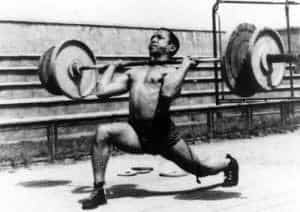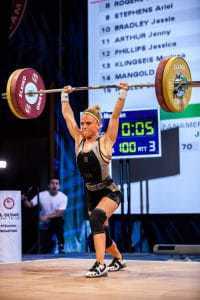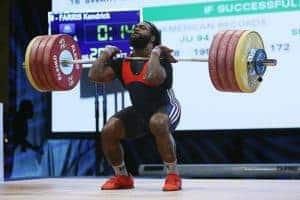After reading the title of this blog you are probably wondering why I both waited this long to write it and why I would add one more blog to the plethora of material out there on the topic already. Honestly, I’m probably not going to add anything to this debate or add anything new that you don’t already know. I promised myself I would write this blog when the weight classes came out but I wanted to get some reactions from some athletes and coaches before I published it. So here ya go. A community perspective:

1913:
Men:
60kg, 67.5kg, 75kg, 82.5kg, +82.5kg
1947:
Men:
56kg, 60kg, 67.5kg, 75kg, 82.5kg, +82.5kg
1951:
Men:
56kg, 60kg, 67.5kg, 75kg, 82.5kg, 90kg, +90kg
1964:
Men:
52kg, 56kg, 60kg, 67.5kg, 75kg, 82.5kg, 90kg, +90kg
1969:
Men:
52kg, 56kg, 60kg, 67.5kg, 75kg, 82.5kg, 90kg, 110kg, +110kg
1977:
Men:
52kg, 56kg, 60kg, 67.5kg, 75kg, 82.5kg, 90kg, 100kg, 110kg, +110kg
1983:
Men:
52kg, 56kg, 60kg, 67.5kg, 75kg, 82.5kg, 90kg, 100kg, 110kg, +110kg
Women:
44kg, 48kg, 52kg, 56kg, 60kg, 67.5kg, 75kg, 82.5kg, +82.5kg
1993:
Men:
54kg, 59kg, 64kg, 70kg, 76kg, 83kg, 91kg, 99kg, 108kg, +108kg
Women:
46kg, 50kg, 54kg, 59kg, 64kg, 70kg, 76kg, 83kg, +83kg
1998:
Men:
56kg, 62kg, 69kg, 77kg, 85kg, 94kg, 105kg, +105kg
Women:
48kg, 53kg, 58kg, 63kg, 69kg, 75kg, +75kg
2016:
Men:
56kg, 62kg, 69kg, 77kg, 85kg, 94kg, 105kg, +105kg
Women:
48kg, 53kg, 58kg, 63kg, 69kg, 75kg, 90kg, +90kg
2018:
Men: 55kg, 61kg, 67kg, 73kg, 81kg, 89kg, 96kg, 102kg, 109kg, +109kg
Women: 45kg, 49kg, 55kg, 59kg, 64kg, 71kg, 76kg, 81kg, 87kg, +87kg

Ursula Papandrea (in summary) said she felt like the middle classes, which consequently hold the highest quality lifting and also the largest portion of the sport, did not get the credit they were due. She was hoping for a little less spread through the lower and upper 50s for the women as well as the mid-70s up into the 80s for the men. Her opinion, which I tend to agree, is that in those classes there is the most impressive lifting and often times the highest percentage lifting per bodyweight. She would’ve loved to seen a little less of a spread between classes like the 73 and the 81 and believes there should be one more class between 49 and 64. Like me, she struggles with the idea of a 45 class though historically something around that range has always existed.

On the guys side I actually really like the new categories. I think this is a good mix and a good change pretty far away from the original categories. They are far enough away that it forces people to move up. Unlike the females, where it is close to the same. I also think the starting categories in both male and female are too low.
Now the Olympic categories is a much different story. It very much favors some of the lighter categories with the smaller gaps. Since we can only send a max of 1 in each category, making up a smaller body weight difference of 5-6 in the lighter categories is much easier to do than a body weight difference of 10+ in the high body weight categories.
Because I am one that likes to mix things up, I personally would have liked to see the 7 Olympic categories be total different than the 10 normal categories. Again, I’m a bit crazy.”

“I can’t remember which one I thought didn’t make a ton of sense but mostly because it’s not important (at least I don’t think so).
It is what it is, as it has been each time the classes change. Honestly, I don’t see the value in doing much with how they settled out to be except lift more weight.
Goal is the same – lift more weight. There will always be classes that seem to have an advantage. Doesn’t matter. Lift more weight.
The end.”

In my own personal opinion I think all the coaches above are correct. It does seem like some of those middle classes got the short end of the stick in an effort to appease some of the lighter body weights in Asian countries as well as the heavier bodyweights around the Middle East and Central Asia. It’s a tough road for a 69 kg girl to have to make the jump 76 and an even tougher road I think for a heavy 85 to be competitive as a 96. We all have athletes who come to mind in those areas and if you pay attention to some of our best performers they seem to live right around that space.

